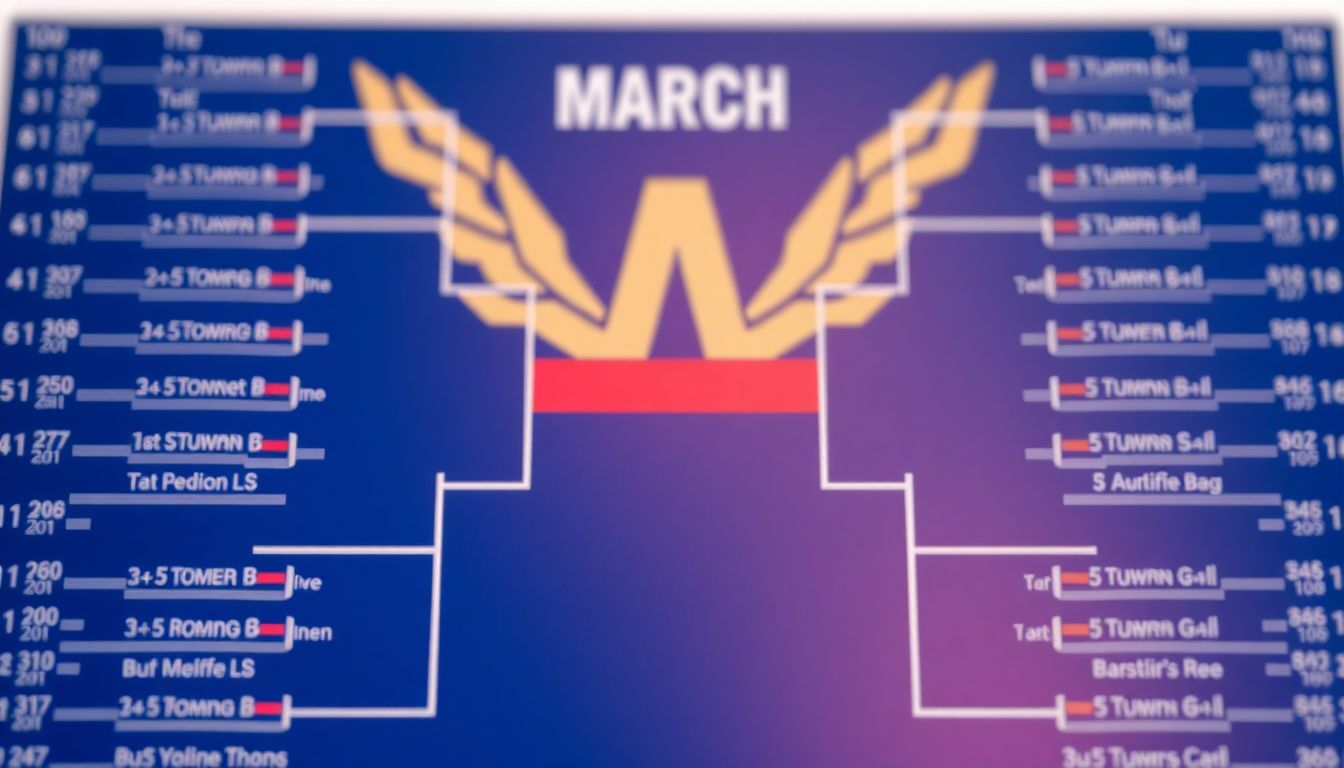March Madness is here! It’s a ride of buzzer-beaters, upsets and bracket-busting madness. One popular way to get in the spirit is with the Yahoo Sports Bracket Challenge. This guide provides strategies and tips to improve your chances of winning. Time to make some savvy selections and possibly win the title!
Reading the Yahoo Sports March Madness Bracket Challenge
The Yahoo bracket challenge is easy. You predict the winners of all the tournament games before they get underway. You receive points for correct picks. The person with the highest point total at the end wins. What makes Yahoo unique? It’s user-friendly, it has a lot of players, and at times, it gives out prizes.
How the Yahoo Bracket Challenge works
Making a bracket is very simple. Create a Yahoo account and pick your teams online. You have to do this before the tournament begins, so keep an eye on your deadlines! The Yahoo interface is easy to use. It should take you hardly any time to fill out your bracket. There are often limits to how many brackets you can submit, so check on that too.
Scoring System Breakdown
You accumulate points for every correct selection. Scores rise round by round as the tourney progresses. For example, correctly picking a Sweet Sixteen game is worth more than correctly picking a first-round game. Yahoo could have bonus points or tie-breaking rules. This may be a correct guess of the total score of the last game. The following table may be used for guidance:
Round Points Per Correct Pick First Round 1 Second Round 2 Sweet Sixteen 4 Elite Eight 8 Final Four 161 Championship 32
Key Features and Benefits
It’s also in Yahoo Sports cool features. Create groups to compete with friends If you want more guidance, you can check out expert picks. The platform also allows you to track your bracket’s progress. Occasionally Yahoo will offer prizes or incentives for high scorers.
Strategic Bracket Selection: The Data-Driven Approach
Stop guessing. Use data to help make more informed decisions. Well-founded research and careful analysis are far better than going at it gut-feeling.
Statistical Trends and Team Analysis
Look at key stats. Offensive and defensive efficiency matters. How tough/weak is the team’s schedule? How have they fared in recent times? Grab these stats using something like KenPom or ESPN. Everything else the formula takes into account can tell you which teams are real contenders.
The seeding and historical upsets explained
Seeding provides a rough sense of a team’s strength. Higher seeds occasionally lose to lower seeds, which is an upset. Study past tournaments. Here’s how often each seed matchup is upset. Every year, we have a 12 seed that beats a 5 seed, that’s a classic.
Incorporating Injuries and Player Matchups
Injuries can transform everything. Key player matchups also shape results. If a team loses its best player to injury, its odds decline. Consult injury reports on sites like CBS Sports or Rotoworld. Also knowing who’s healthy helps when making picks.
Bracketology 102: Not Your Average Selections
Want an edge in a big pool? Try more complex strategies. Don’t just go with the favorites.
Picking Undervalued Teams: A Contrarian Approach
Contrarian picks are opposite of the herd. Look for teams that are being most underplayed. These are frequently teams with difficult slates or latest swoons. If either of these teams performs well, your bracket will be unique.
Scoring System and Pool Size: An Optimization
Your strategy will differ on various scoring systems. Be bolder and take more risks — in large pools. In order to succeed, you must stand out. In smaller pools, more conservative picks may prevail. Aim to find the right balance between risk and reward.
Simulation of Tournament Results
Monte Carlo simulations play out the tournament thousands of times. That indicates each team’s probability of winning. These simulations are available through resources like TeamRankings. It offers a good vision of possible outcomes.
Step 5: Keep Track of Your Bracket and Make Adjustments
While you can’t fix your bracket, keep engaged! What’s happening now, you can learn from.
Step 4: Watching Game Results and Updating Probabilities
Watch the games! Track the scores. Reassess your picks for future rounds after each game. Some of the teams may look better or worse than you expected.
Your Performance Relative To The Field
How yours compares See how your bracket stacks up. Explore how your score stacks up against other Yahoo users. Are you faring better or worse than average? This allows you to assess if your strategies are paying off.
You Can Learn from Your Mistakes: Post-Tournament Analysis
Once the tournament is over, I look back on your bracket. What did you get right? What did you get wrong? Next year, you can work on improving by understanding your mistakes.
Expert Advice on Best Practices and What to Avoid
Follow these expert tips to avoid common pitfalls.
Top Bracketology Musketeers and Tools
Listen to Bracketology Experts People like Joe Lunardi at ESPN are invaluable. Read articles and listen to podcasts too, for the latest news.
Brackets Blunders To Avoid
A huge no-no: Picking too many upsets. Bet with the favorites in the early rounds. It’s bad to automatically follow popular picks, too. Do your own research!
The Key Role of Diversification
Do not have all your eggs in one basket. Create several brackets. Do each one with different tactics. This will increase your chances of winning.
Conclusion
Follow these tips to help you crush the Yahoo Sports March Madness Bracket Challenge. Do your research. Understand the data. Use smart strategies. This is not the time to play it safe.
Join the Yahoo Sports Bracket Challenge today. Make your bracket, and polish your trophies!
